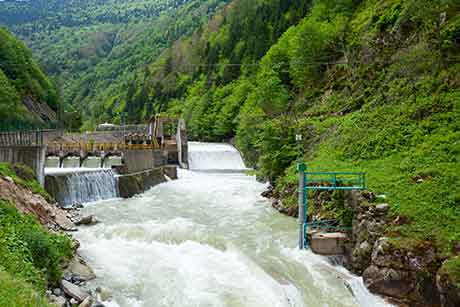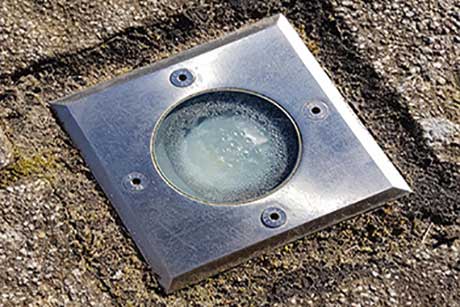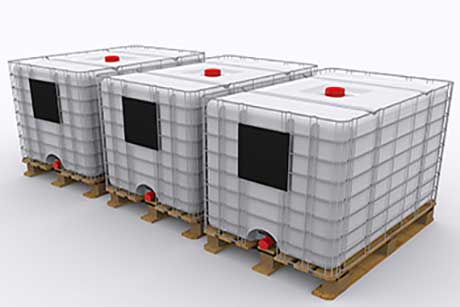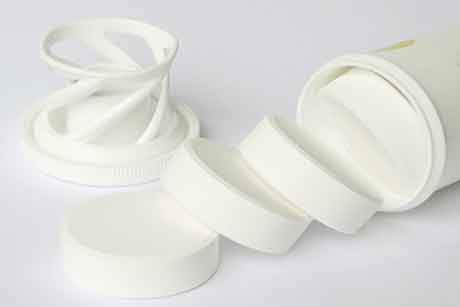- Home
- Factory & Lab
Desiccants as part of the process
Protecting wind and water power stations from moisture
In the offshore, onshore and hydropower sectors, climatic conditions caused by moisture are extreme not only during operation but already before commissioning. Temperature fluctuations between day and night are often enough for the humidity level to repeatedly exceed a critical threshold.
Challenge: Moisture impact on sensitive system components
Moisture and condensation can lead to corrosion, material damage or malfunctions in wind and hydropower systems – both during transport and storage as well as in operation. In particular, the high humidity in offshore installations poses a risk to electrical and mechanical components even before commissioning.
Solution: Targeted use of different desiccants
ThoMar provides suitable solutions for every phase of a system’s lifecycle: Desiccant bags according to DIN 55473 protect packaged components during transport and storage, SeaDry high-performance desiccant effectively dehumidifies offshore wind turbines until commissioning, and Silica Gel Orange ensures a constant supply of dry, filtered air for transformers and generators during operation.
Result: Comprehensive moisture protection through combined solutions
The combination of different desiccants from ThoMar’s range provides continuous protection – from assembly through transport and storage to ongoing operation. With process-oriented consultation from our specialists, optimal product combinations and placements are determined, ensuring reliable moisture control throughout every stage of the system’s service life.

Even before commissioning, desiccants protect wind turbines
from moisture damage.

Silica gel is used for running transformers of hydropower plants.
Use of Silica Gel in Drying Plants
In the production of hygroscopic powders such as nutritional supplements, functional foods, or pharmaceutical products, dry air is essential for consistent quality and smooth processing. Even small amounts of moisture can lead to clumping, poor flowability, or production disruptions.
Challenge: Moisture in sensitive filling processes
The filling stage is particularly critical, as the powder comes into direct contact with the ambient air. Even in sealed system areas, residual humidity cannot be completely avoided – especially during temperature fluctuations or after production downtimes.
Solution: Air dehumidification with loose silica gel granulate
To keep the air in the filling area consistently dry, loose silica gel granulate is used – for example, in industrial air dryers or specially designed system modules.
Result: Stable product quality during production
The highly effective granulate lowers the relative humidity to a safe level for sensitive products before contact occurs. This reliably prevents condensation and moisture accumulation, ensuring a consistently dry production environment.

Silica Gel is used in industrial drying plants.
Unwanted Product Smell caused by Condensation
A ThoMar customer, a manufacturer of spectacle cleaning kits, discovered that condensation was forming inside the tightly sealed plastic packaging during production. The packaging contains a cleaning cloth, cleaning fluid, and an instruction leaflet, and also serves as part of the final product.
Challenge: Condensation in tightly sealed packaging
Temperature fluctuations and residual moisture caused humidity to accumulate inside the container. The cleaning cloth developed an unpleasant odour, and the paper instructions became damp and wavy – giving the entire set a lower-quality appearance that did not meet the manufacturer’s high standards.
Solution: Desi Dry silica gel bags to prevent condensation
To reliably solve the problem, a Desi Dry silica gel packet was placed directly inside the plastic container during production. The desiccant binds excess moisture in the enclosed air before it can condense.
Result: High product quality in line with customer expectations
Since the introduction of ThoMar silica gel packets, the interior of the packaging has remained dry, and all product components have retained their quality. Scent, texture, and appearance once again fully meet customer expectations. This example demonstrates how even a small adjustment in the production process – the targeted use of a desiccant – can make a noticeable difference.

Silica gel packets prevent musty product smell.
Flower Drying with Silica Gel
When preserving fresh flowers, it is essential to maintain their colour, shape, and structure as true to the original as possible. Conventional drying methods such as air drying or pressing often lead to colour loss, deformation, or brittleness of the petals.
Challenge: Gentle drying while preserving colour and structure
For particularly vibrant and delicate flowers, achieving even moisture removal is a key challenge. If moisture is extracted too quickly or unevenly, the blossoms lose their brightness and shape – a quality loss that is unacceptable for professional applications.
Solution: Flower drying with silica gel from ThoMar
A ThoMar customer uses loose silica gel, also known as Kieselgel for professional flower drying. The fine-grained, highly porous granulate gently and evenly removes moisture from the blossoms without affecting their structure or colour. After the drying process, the silica gel can be regenerated and reused several times. This method is ideal for businesses that regularly preserve larger quantities of flowers – for further processing or as decorative products.
Result: Authentic flowers with a natural appearance
The use of loose silica gel ensures consistently high quality of dried flowers. Colour, shape, and surface texture are preserved, resulting in a natural and premium appearance.

With the help of silica gel bouquets can be preserved.
Condensation in Floor Lights
Ground lights for pathways, facades or stages must operate reliably even under changing weather conditions. However, large temperature differences between operation and cooling phases often cause condensation inside the housing – a problem that can lead to corrosion, short circuits or clouded light surfaces over time.
Challenge: Moisture in ground-level lighting housings
When the light is switched off, the housing cools down and a vacuum is created. This causes humid ambient air to be drawn in through seals or microgaps, where it subsequently condenses on the cold interior surfaces. Even in high-quality, IP-rated luminaires, this effect can hardly be avoided over time – especially with frequent temperature fluctuations outdoors. The consequences range from fogged light surfaces and electrical failures to a reduced lifespan of the fixture.
Solution: Use of BoxDryy® high-performance desiccant
To reliably prevent condensation, ThoMar recommends using a salt- and starch-based high-performance desiccant such as BoxDryy®. It is placed directly inside the lighting housing and binds the moisture drawn in during the cooling phase before condensation can occur. Installation is simple, can be carried out retroactively, and easily integrates into existing maintenance routines.
Result: Protection against moisture damage and extended service life
BoxDryy® prevents condensation inside the housing, protects electronic components from corrosion and ensures consistent light output. For manufacturers, this means greater product reliability, fewer complaints and a longer service life for the luminaires – even under demanding environmental conditions.

Silica gel bags prevent condensation in floor spotlights.
Use of desiccants in bridge piers
Modern bridge structures such as the Øresund Bridge between Denmark and Sweden, or similar constructions spanning bodies of water, are exposed to extreme climatic and mechanical stresses. The situation is particularly critical within the reinforced concrete pillars that must support the structure for many decades.
Challenge: Moisture and condensation in bridge pillars
Due to structural design requirements, the pillars contain cavities or inspection shafts, often located several metres below the water surface. These areas are particularly susceptible to condensation caused by temperature differences and the ingress of moisture through potential leaks. Even in largely sealed structures, humidity levels inside can rise over time. This creates risks such as corrosion of embedded steel reinforcements or cables, mould growth and microbial contamination, as well as impairments to sensors, maintenance systems, or electrical installations.
Solution: Regulating humidity with desiccants
To prevent such damage, ThoMar OHG relies on a simple yet effective method: the targeted placement of desiccants in vulnerable cavities. These remove moisture from the enclosed air over a long period, ensuring a permanently stable internal climate – without the need for powered systems or complex technology.
A practical example is the Øresund Bridge, whose underground pillar areas are regularly equipped with desiccants. Depending on the amount of moisture and the specific application, ThoMar offers products such as SeaDry desiccants for containers and large spaces or CertiDry desiccant bags.
Result: Long-term protection and increased operational reliability
The use of desiccants effectively prevents corrosion, moisture damage, and malfunctions of technical systems. The solution can be easily integrated into existing maintenance schedules, providing long-term protection of the structure and significantly contributing to the operational reliability of such infrastructure projects.

Desiccant bags are used at the base of the bridge piers.
Drying of Intermediate Bulk Containers
IBC containers are indispensable in industrial logistics – but especially after cleaning, residual moisture can lead to unexpected issues. Targeted protection helps to ensure product quality and process safety.
Challenge: Residual moisture after cleaning IBCs
Intermediate Bulk Containers (IBCs) are large-volume, reusable transport and storage units widely used across various industrial sectors. They are designed for the safe and hygienic transport of liquids or free-flowing materials. Thanks to their robust construction, standardised dimensions, and ease of handling, IBCs are a key component in numerous logistical processes. After use, IBC containers must be thoroughly cleaned to remove residues and maintain hygiene standards. However, a commonly overlooked issue arises: residual moisture or condensation inside the container, particularly in hard-to-reach areas. Residual moisture poses several risks – it can trigger unwanted reactions such as decomposition or crystallisation when in contact with chemical substances, impair the quality of hygroscopic products, or encourage microbial growth in IBCs used for food or cosmetics.
Solution: Use of desiccants for post-drying
To achieve effective and rapid drying of IBCs, ThoMar recommends the targeted use of desiccants. Depending on the type of goods being stored or transported, we recommend the DIN-compliant CertiDry dustproof desiccant with hanging strap, or for sensitive goods and food products, the use of a BoxDryy® high-performance desiccant pouch. Both options enable quick, clean, and reliable drying of the container interior.
Result: Shorter drying times and increased equipment availability
The use of desiccants allows IBCs to dry significantly faster after cleaning. This prevents microbial growth, chemical reactions, and quality losses in sensitive filling materials. As a result, process reliability is maintained, container reuse can take place without delay, and companies benefit from reduced downtime, greater equipment availability, and consistent product quality across all batches.

Drying of IBCs through desiccants.
Desiccant Plugs for Tablet Tubes
Manufacturers of pharmaceuticals and food products must reliably protect sensitive goods from moisture. Particularly hygroscopic products such as effervescent or chewable tablets are highly sensitive to humidity – they can clump, change in consistency, or lose their effectiveness. To ensure product quality, desiccant stoppers are used to seal tubes airtight and bind moisture with silica gel.
Challenge: Moisture protection for sensitive filling materials
In pharmaceutical and food production, moisture exposure must be consistently avoided to maintain the stability of active ingredients. Traditional packaging solutions reach their limits here, as they offer no active humidity control. Especially in automated filling processes or during long transport routes, an integrated and reliable moisture protection system is essential.
Solution: Silica gel granulate or CapDryy® desiccant closures
ThoMar supplies high-purity, microporous silica gel to an international packaging manufacturer, who integrates it into components of tube packaging. The material keeps the humidity level inside the packaging consistently low, providing reliable protection for the product.
Alternatively, ThoMar offers CapDryy® – an integrated desiccant capsule, which can be incorporated directly into plastic closures. It contains pharmaceutical-grade silica gel, is designed for automated production lines, and meets FDA requirements.
Result: Maximum product safety and stable storage conditions
The targeted use of silica gel granulate or CapDryy® closures ensures the long-term quality of sensitive products. Manufacturers benefit from controlled humidity levels inside the packaging, extended shelf life, and a process-safe, regulatory-compliant solution for demanding applications.

Silica gel in the packaging lids keeps effervescent tablets dry.

Desiccants are applicable almost universally. In addition to containers, transport, packaging or storage, they are also used as part of the production process in many companies. ThoMar OHG offers you desiccants in various formats and chemical compositions. Thus Silica Gel for standard requirements can be ordered directly from our shop. However, if required, it is also available in particularly fine grinding grades or high purity grades. Have you not found yet what you are looking for on our website for your special application? Just give us a call and tell us your ideas where and how you want to use desiccants. We will find a solution together with you!






